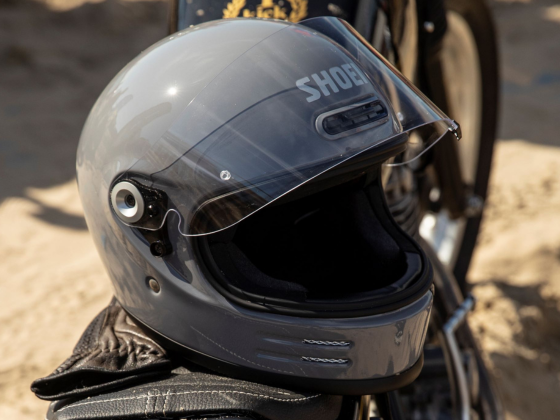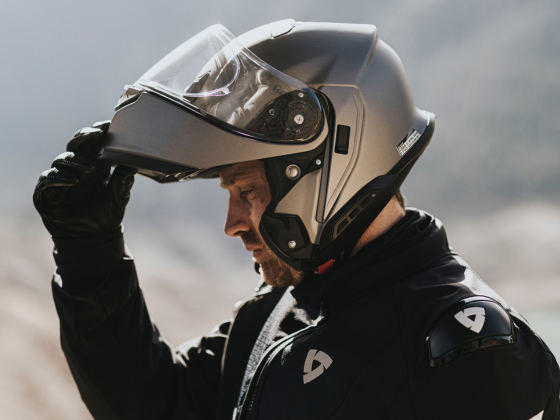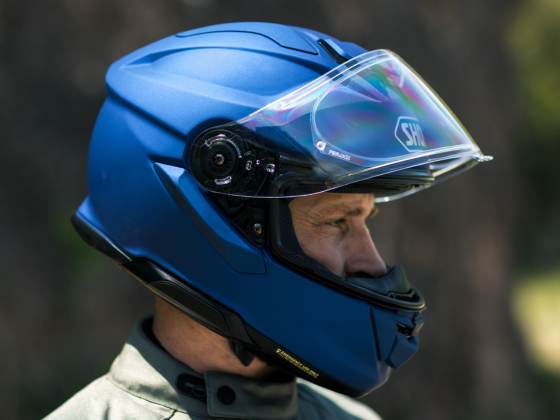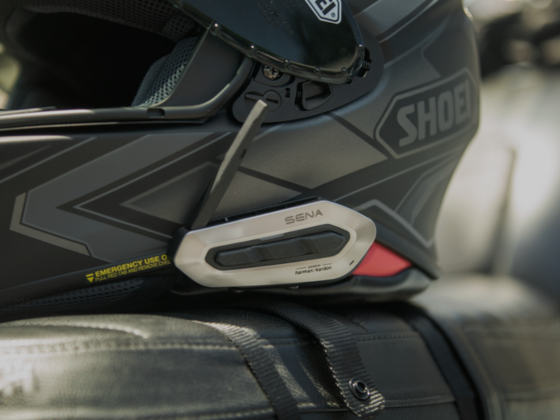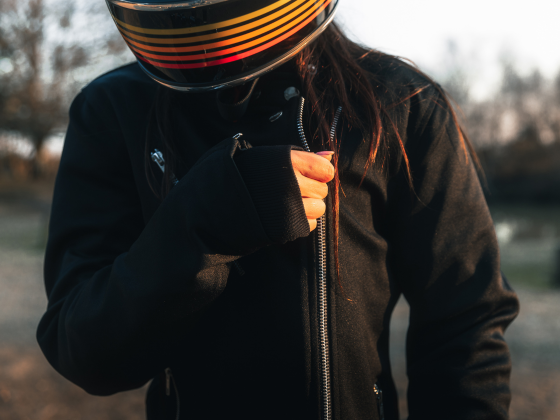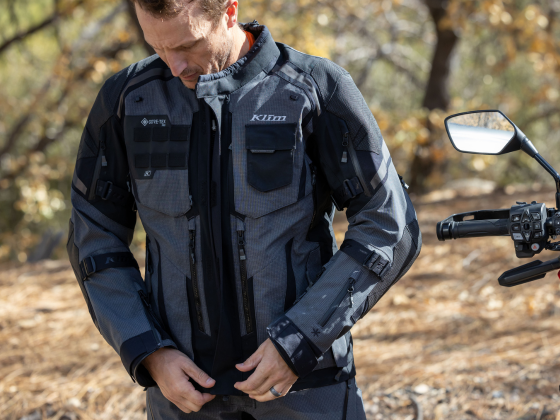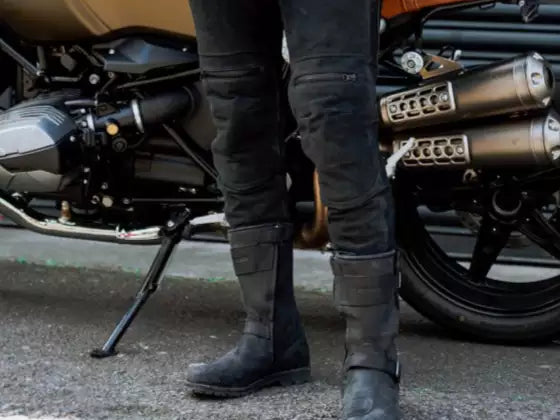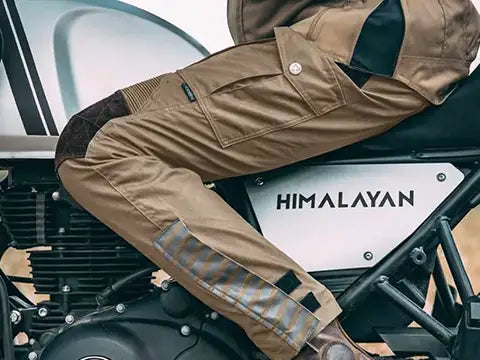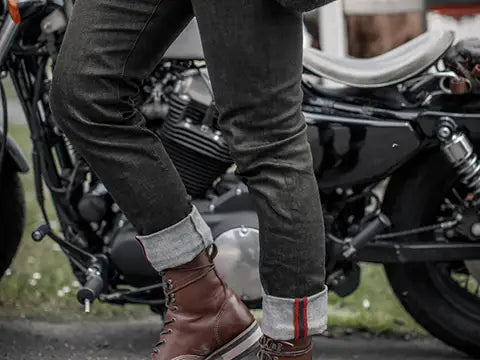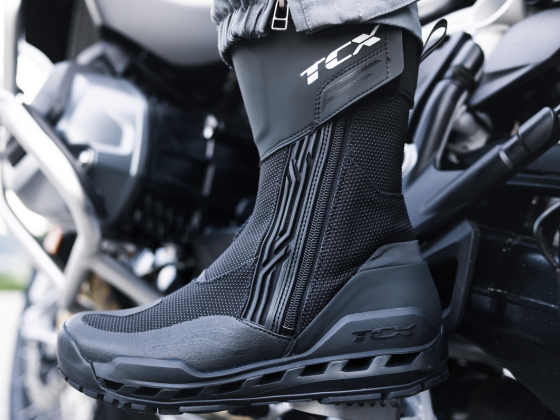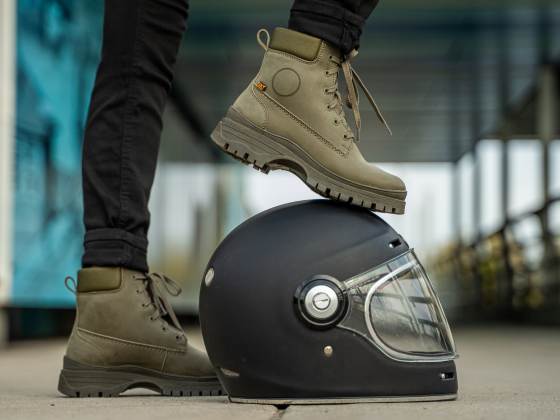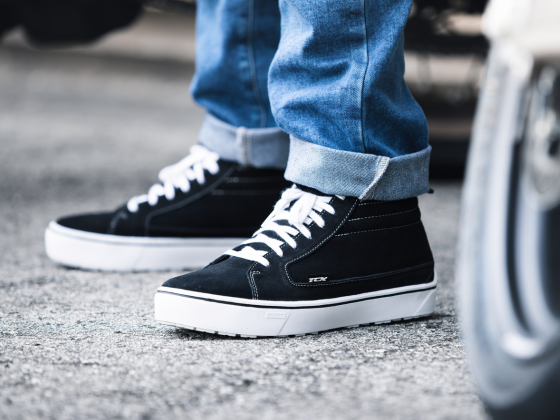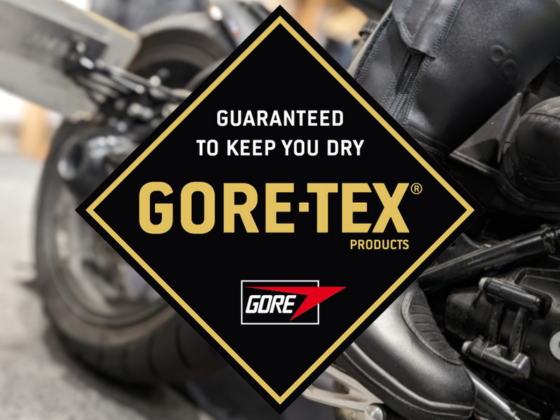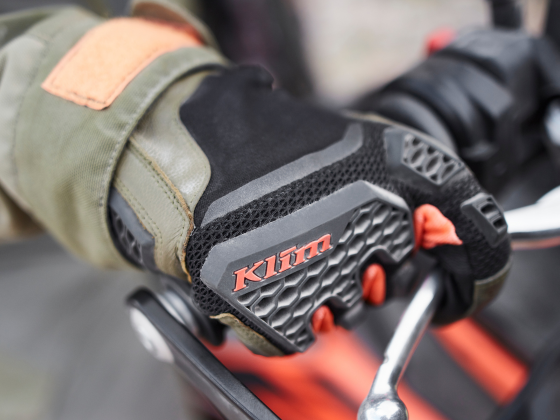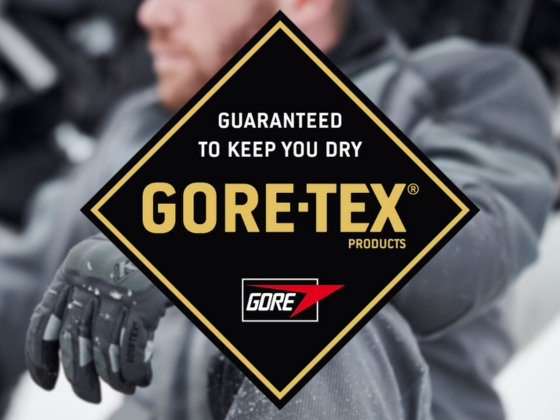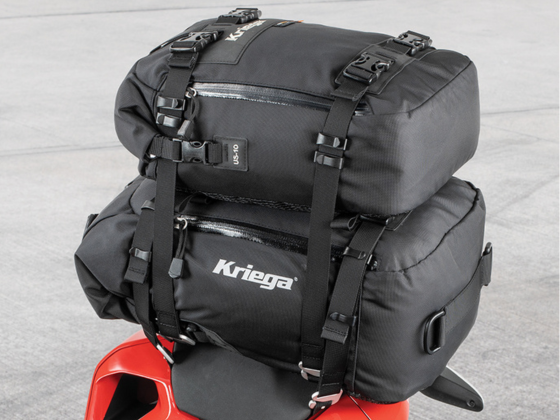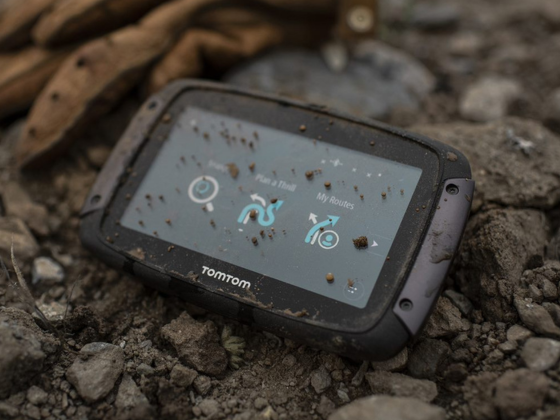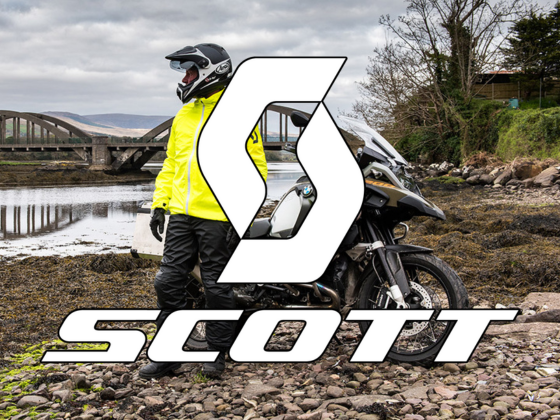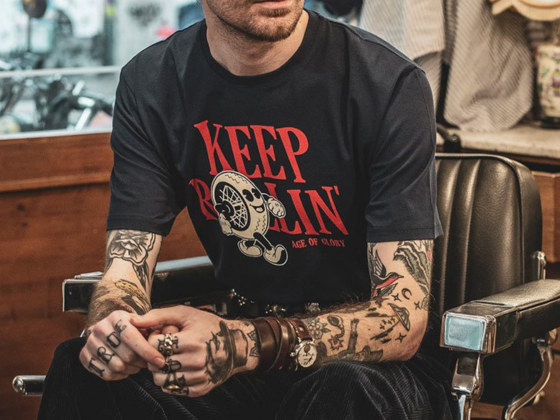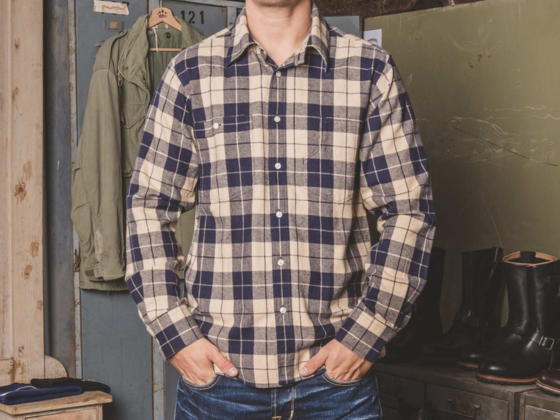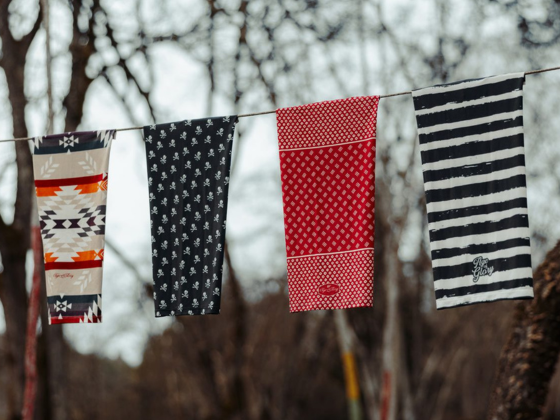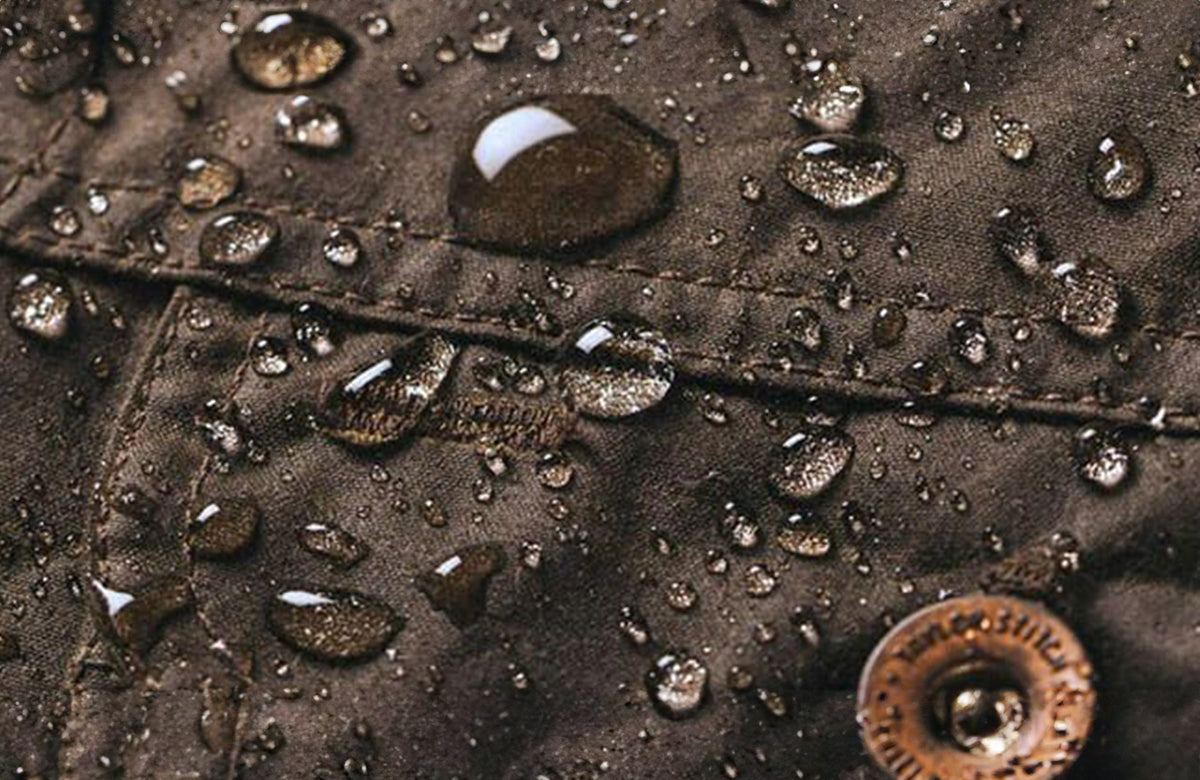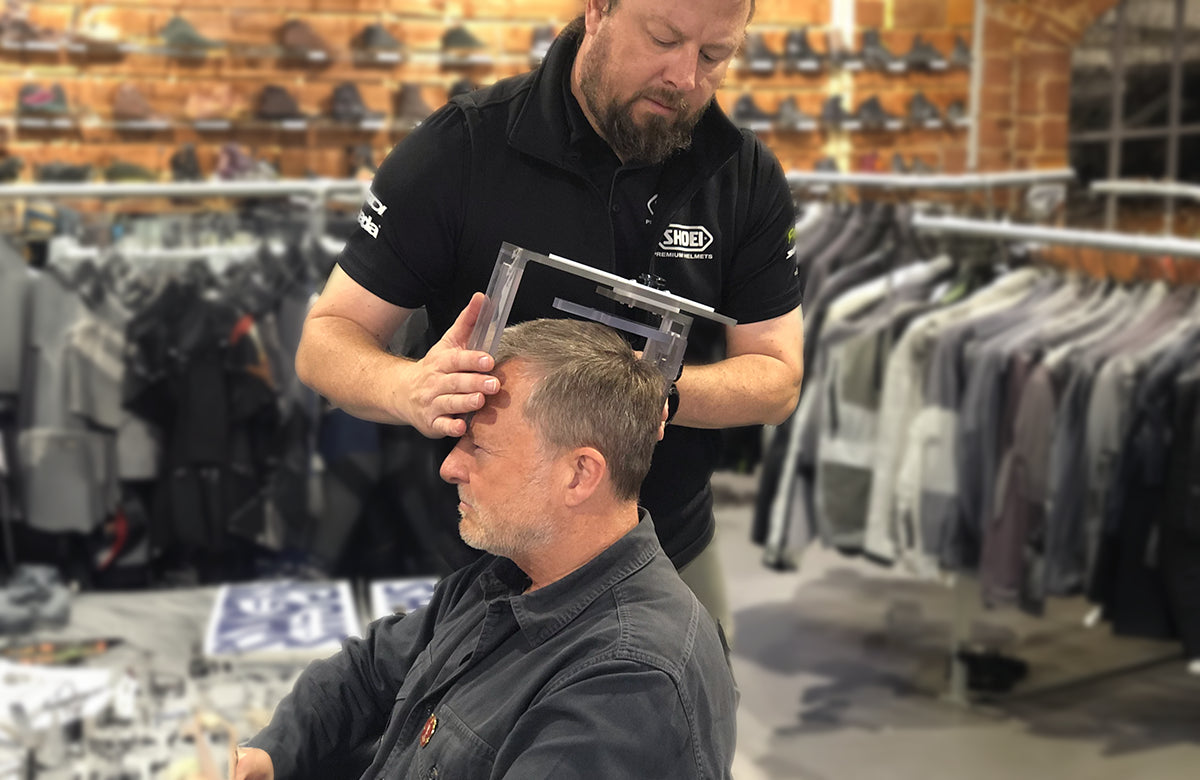In store one of the least understood products in the motorcycle clothing arena is Gore-Tex. We get asked “what is it” and “why is it more expensive” so often. Some people think its some sort of abrasion protection material, some think its just a wind stopper and most have no idea how to look after it. To be honest the majority of people rarely or never clean their motorcycle gear, which is so important. Correct care of motorcycle clothing will ensure it lasts longer and functions correctly during that time.
As a motorcycle rider in the U.K rainfall is one of our biggest enemies. It can strike at any time of the year, from a cool summer evening to what was forecast to be a crisp, dry winter afternoon. Fortunately, way back in 1976, W.L. Gore launched a new weapon in the battle against wet weather. It was called Gore-Tex.
Gore-Tex is a trade mark of W.L.Gore, a company founded in 1958 in a basement in the home of Bill and Vieve Gore, in Delaware, Newark, USA. Bill had left his job at DuPont to persue his belief in the untapped potential of PTFE (polytetrafluoroethylene).
11 years later in 1969, Bill’s son rapidly stretched some PTFE under certain conditions and the results were an incredibly strong, microporous material with an amazing list of characteristics, including low water absorption and good weathering properties. The following year 1970, Gore apply for the first of many patents involving expanded PTFE. Then 6 years later in 1976, Gore receives its first commercial order for Gore-Tex fabric, the first breathable, waterproof and windproof fabric. It takes another 3 years to develop Gore-Seam, a process which uses specialist seam sealing machines and seam tape. A process that adds greater waterproof protection to garments.
The following years, Gore starts to roll out new products.
- 1980 - 2-Layer fabric glove inserts
- 1981 - Nasa space suits for the first Space Shuttle mission
- 1982 - The Z-liner is launched ad used in boots
- 1989 – The famous Guaranteed To Keep You Dry promise
Gore-Tex have been developing many innovative products ever since.
We tend to think of Gore-Tex motorcycle clothing as having been around for many years, but in fact its not been that long. For example, Dutch motorcycle clothing company Rev’it didn’t launched their first Gore-Tex motorcycle jacket until 2010.
What is Gore-Tex Used For?
Gore-Tex is chiefly used to make outdoor performance clothing and footwear, such as motorcycle jackets, boots and gloves. Its performance in harsh weather conditions makes Gore-Tex synonymous with outdoor culture, pioneered by top outdoor brands, who all use this technology to create the most lightweight and performance driven fabrics for their outdoor products.
As Gore-Tex membranes can bond to a plethora of materials, Gore-Tex is also used to make hats, gloves, socks, and even bags. Gore-Tex is also popular in the world of sports shoes with big names such as Nike, Adidas, and New Balance incorporating Gore-Tex technology in the production of their winterised sports shoes that can repel water and keep feet dry.
How does Gore-Tex Work?
Famously marketed as “Guaranteed to Keep You Dry”, Gore-Tex is waterproof and windproof. The microscopic pores of a Gore-Tex membrane are approximately 20,000 times smaller than a water droplet, meaning no water can pass through fabrics bonded with the membrane. These pores, however, are 700 times bigger than a molecule of moisture vapour, meaning sweat can pass through the membrane. In addition, the molecular structure of the membrane is so complex that most air molecules get scrambled and cannot penetrate the membrane.
In order to create Gore-Tex products, the Gore-Tex membrane is applied as a layer between a lining and outer textile. This layering process can be applied in several ways to achieve different performance specifications.
The most common layering constructions are:
- Z-Liner – This was the first variant to be used in motorcycle products. This construction is similar to the 3-Layer variant, however, the Gore-Tex membrane is bonded to an extremely lightweight fabric that floats freely between the outer textile and the lining. This method is good for making complex winter outerwear with layers of fabric and insulation.
- 2-Layer Construction – The Gore-Tex membrane is bonded to the outer textile only and not the lining. This allows Gore-Tex garments to have a separate lining which can be combined with insulation like down fill.
- 3-Layer Construction – This method bonds the Gore-Tex membrane to both the outer textile and the lining, making for a more durable fabric. This construction is ideal for lightweight shell jackets.
How to look after your Gore-Tex product
Wash your garment as often as you need to remove contamination, dirt, dead insects etc. Washing, drying and reheating your garment helps restore the durable water repellent (DWR) that is important to the performance of a GORE TEX garment. It is very important to clean your garment regularly. If contamination is allowed to build up and remain on the garment it will degrade the performance of the membrane and allow moisture to penetrate the fabric. The pours get blocked with dirt and then the moisture can penetrate through the dirt. Your guarantee will also be void if the garment has not been looked after correctly.
For best results, it is recommended to use a liquid rather than powder detergent. There are several Technical Wash products available designed specifically for Gore-Tex fabrics.
Never use stain removers or bleach.
Line-drying your garment, it uses less energy and reduces your impact on the environment. Once it’s dry, tumble dry the garment for 20 minutes to reactivate the durable water repellent (DWR) treatment on the outer fabric.
GORE TEX garments are treated with an ultra-thin coating known as DWR, or durable water repellent. This treatment causes water to bead up and roll off the outer layer of garment, instead of being absorbed. Regular wear and tear, as well as exposure to dirt and impurities diminish the water repellency of your garment. If water repellency can no longer be reactivated by washing and drying you’ll need to reapply a durable water repellent (DWR), this can be a spray on or wash-in product. Be sure to always follow the product manufacturer’s instructions for reapplication and don’t forget to activate it by tumble drying or ironing.
Before washing, remove all armour, inner liners, zip the pockets and fasten any loose flaps and straps. Then follow these simple steps:
- Machine wash (105°F/40°C).
- Use a small amount of Tech Wash or liquid detergent.
- Rinse twice and minimize spinning.
- Don't use powder detergents, fabric softeners, stain removers, or bleach.
- Don't wash with heavily soiled clothing.
- Tumble dry on a warm gentle cycle or line dry your outerwear.
- Don't dry at a high temperature.
- Once dry, tumble dry for a further 20 minutes to reactivate the durable water repellent (DWR) treatment.
- If a dryer isn't available, iron the garment on a gentle setting. When ironing, protect the garment with a towel or cloth.
- Don't use steam.
If your garment does not “bead” water
You can do this step any time you notice the water repellency needs a boost. However, do not apply DWR to a dirty garment. Either clean off slight soiling with a cloth and warm water or wash in a washing machine.
If water doesn’t bead and run off after washing, you’ll need to reapply a durable water repellent (DWR).
Use a DWR product of your choice, available as a spray or a wash in product. If you have just washed your garment and found out the water is not beading, you will probably want to use a spray on DWR product rather than a wash in product.
Following application, tumble dry your garment again for 20 minutes to activate the DWR treatment. Or iron the dry garment on a gentle setting (warm, no steam), placing a towel or cloth between the garment and the iron.
Cleaning Gore-Tex Boots and Gloves
Fabric Boots – Remove excess dirt and clean using a suitable fabric cleaner in warm water, allow to dry naturally, then apply a spray on DWR if necessary.
Leather Boots – Remove excess dirt and clean using warm water with a small amount of liquid detergent. Allow to dry naturally, then apply a leather protection product that states it is suitable for Gore-Tex boots. Do not use anything that does not state suitable for Gore-Tex as it may block the pours of the leather and prevent the Gore-Tex from breathing.
Fabric Gloves and Leather Gloves should be cleaned in the same way as the boots. However, you may want to wash the gloves internally as well as externally to remove sweat and odours. Drying will however take longer.
DO NOT use a heat source to rapid dry leather as it can damage the leather.
GORE-TEX GUARANTEE
With the purchase of a Gore-Tex product that has a “GUARANTEED TO KEEP YOU DRY” square tag attached, you are eligible to a limited guarantee offered by W.L.Gore & Associates, at no extra cost. This guarantee is over and above any warranty given by the product manufacturer.
Most manufacturers of motorcycle Gore-Tex products now give a 5 year warranty, with 1 exception being Klim, that give a “life time” warranty. If your Gore-Tex product leaks, you can either contact your retailer from where you purchased the product, if still within the manufacturers warranty period, OR at any time you can contact Gore-Tex directly.
The warranty covers the waterproofness, Windproofness and Breathability of the product. Gore will repair, replace or refund your purchase.
You must have your original purchase receipt and the “GUARANTEED TO KEEP YOU DRY” square tag.
The decision by Gore will be made upon examination of the product’s useful life at the. Time of the return. Leakage and performance issues caused by accidents, misuse, normal wear and tear or lack of proper care are excluded but may be repaired at “reasonable cost”.
If you believe you have a claim, you can contact Gore direct by following the guide at this link:
https://www.gore-tex.com/en_uk/support/product-claims
How is Gore-Tex Tested?
Unlike other waterproof products, Gore-Tex does not supply hydrostatic head information with any of its outdoor gear. Some people might find this annoying and wonder why Gore-Tex doesn’t have HH ratings. Gore-Tex purports that column testing waterproof fabric is only a small part of what makes a jacket waterproof. They place much more importance on testing the completed products to include seam, zip, and comfort into the equation.
They have 3 different tests for clothing, footwear, and gloves which all include 3 stages of testing to make sure they can guarantee the highest performance. The first stage is lab testing materials under strict scientific conditions to get accurate results that can be repeated. The second stage is human testing which gathers feedback from people on how a product feels, works, and wears in different conditions. The final stage is in the field testing where experts in their field are asked to put their gear through its paces and report on their experience and opinions.
Is Gore-Tex 100% Waterproof?
When talking about outer shell layers, Gore-Tex is 100% waterproof and will block all liquids from passing through the outer layer. It is also breathable which means small amounts of condensation are able to escape the inside of the jacket as you sweat. Not all Gore-Tex is equal, there are different variations of Gore-Tex materials that have different waterproof and breathability capabilities.
What are the Disadvantages of Gore-Tex?
While the advantages of Gore-Tex far outway the disadvantages, there are some things you should know about Gore-Tex before you spend £100s on a new jacket. The first disadvantage of Gore-Tex is that it does require maintenance to reap the full benefits of its waterproof properties. Over time and as you perspire in the jacket, substances can build up within the microporous membrane and reduce it’s waterproof and breathability. This is why it is important to clean Gore-Tex using the correct chemicals and reproof it with water repellent spray every so often.
There is one significant disadvantage with all waterproof, breathable membranes in motorcycle gloves, when used with heated motorcycle grips in the rain. Under normal conditions, moisture passes from the warm skin, out through the membrane to a lower temperature outside. When the outside (heated grips) is warmer than your skin, moisture can pass from the warmer outside to the colder inside, so your hands can become damp. Some manufacturers have attempted to minimise the possibility of this happening by designing their gloves with a dual entry pocket. One for normal use, insulation on the back of the glove and on the palm, the second is for heated grips, with zero additional insulation between your palm and the heated grip. Your palm quickly heats to the same temperature as the heated grip and prevents reverse moisture transmission.
Does Gore-Tex Lose Waterproofness?
Technically, a Gore-Tex membrane will not break down or become less waterproof over time. However, because Gore-Tex is typically bonded to another, or sandwiched between two layers, it is those fabrics that can lose waterproofness. The outer layer of Gore-Tex may stop beading off the water and start absorbing it instead. This can prevent condensation from escaping and cause your jacket to get clammy or have the appearance of being soaked. This is why you should treat your Gore-Tex jacket with a waterproof solution every 4 – 6 months and keep it free of dirt.
How Breathable is Gore-Tex?
There are unconfirmed reports that Gore-Tex fabrics have a breathability rating of between 15,000 g/m2 and 25,000 g/m2 depending on the composition. Compared with other jackets this is pretty good but as Gore-Tex doesn’t publish any ratings, we can’t confirm this.
Is Gore-Tex Worth the Extra Cost?
Many people ask why Gore-Tex is so expensive and the reason is simple. It’s worth it.
Gore-Tex has developed the world’s most waterproof fabric that is also hard-wearing and breathable so you can wear it while exerting yourself. If you make the world’s best fabric for jackets then you really should be charging more than other companies.
Gore-Tex is far from the only waterproof membrane available today, in fact there are many other brands that use very similar fabrics. They are however the most trusted and developed manufacturers in the industry and so spend a lot of time and resources on product testing and innovation. This allows them to be at the forefront of what is possible when it comes to waterproof wear.
A little know fact is that Gore-Tex fabrics are only manufactured by Gore-Tex, which includes laminated materials. This does however restrict the choice of colours that manufacturers of motorcycle clothing are restricted to the colours of fabric that Gore manufacture.
For Z-liner products, gloves, clothing, boots etc, the complete Z-liner is manufactured by Gore, they cut, stitch, bond, seam seal the whole thing, which is then supplied to Gore Approved factories around the world, to produce the final product. In addition, all openings in the garment such as zips and vents, must also be approved by Gore. If they don’t meet Gore’s high standards they cannot be used in a Gore-Tex product. As you can imagine, it is not easy to become an approved Gore-Tex garment, glove or boot manufacturer.
It is because of the high standards and restrictions that Gore-Tex apply to products that use their product, that enable Gore-Tex to be the only waterproof membrane product that has a lifetime waterproof guarantee, which in itself is worth the extra cost and one of the main reasons we recommend products that use it.

